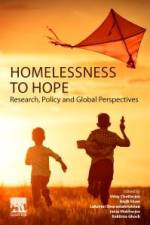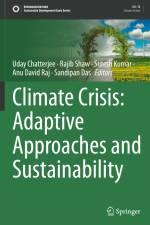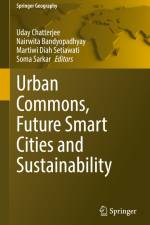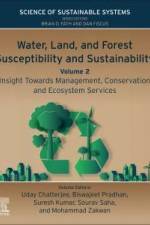Bøger af Uday Chatterjee
-
1.674,95 kr. Homelessness to Hope: Research, Policy and Practices on Global Perspectives brings together stories, observations and critical appraisals that have emerged out of interdisciplinary studies spanning the global North and South. It explores how diverse accounts on homelessness and homeless people are situated within the structural-institutional arrangements of the developing and developed worlds. Through its comparative framework, the book offers a broader understanding of the multiple ways in which homelessness is experienced, perceived, and addressed. The book uses cross-cutting theoretical framings (such as resilience, wellbeing, social-ecological systems, sustainability, urban planning, institutions, gender) and emerging discourses on homelessness to complement current empirical findings. In addition, it provides insights on diverse concepts, meanings, perceptions, identities, and values concerning homelessness across rural and urban settings to promote a comprehensive understanding. In doing so, the book critically addresses the limits of contemporary discussions on homelessness, eviction, and poverty. Broadly, the book's authors explore the causations and processes of homelessness to shed light on physical, social, ontological, territorial, and cognitive facets of homelessness at both local and regional contexts across the world. Furthermore, the book lays a strong focus on viable transitions through identifying, comparing, and advocating for inclusive, collaborative, actionable measures and policies.
- Bog
- 1.674,95 kr.
-
1.133,95 kr. This book aims to contribute to the discourse on climate crisis by bringing together high-quality empirical research on adaptive approaches and sustainability case studies from across the world. The book is divided into six sections. The introductory section has two chapters which sets the ground of the book as it discusses the framing of climate crisis and the different approaches towards it. It also situates the book within the global discourse. The first chapter seeks the traditional approaches to bridge the gap in the new climate science, while the second chapter delivers the ultimate reasons for temperature change, global warming and its consequences (extreme weather events) in a comprehensive way. It is hoped that the book as a whole will provide a timely synthesis of a rapidly growing and important field of climate science but will also bring forward new and stimulating ideas that will shape a coherent and fruitful vision for future work for the community of Undergraduates, Postgraduates, Ph.D. Scholars and Researchers in the fields of environmental sciences, humanistic and social sciences and geography. In addition, policy and decision makers, environmentalists, NGOs, corporate sectors, social scientists, and government organizations will find this book to be of great value. We believe that a diverse group of academics, scientists, geographers, environmentalists, environmental regulators, social scientists, and sustainable scientists with a common interest within the earth environmental sciences and humanistic and social sciences will find this book to be a comprehensive source for reference. Also, we strongly deemed that it will also provide some support for various levels of organizations and administrations for developing and achieving UN Sustainable Development Goals by 2030 in purview of climate change.
- Bog
- 1.133,95 kr.
-
1.041,95 kr. This book provides a critical theoretical framework for understanding the implementation and development of smart cities as innovation drivers, with long-term effects on productivity, livability, and the sustainability of specific initiatives. This framework is based on an empirical analysis of 21 case studies, which include pioneer projects from various regions. It investigates how successful smart city initiatives foster technological innovation by combining regulatory governance and private agency. The typologies of smart city-making approaches are thoroughly examined. This book presents the holistic approach of smart cities, which start from current issue and challenges, advanced technological development, disaster mitigation, ecological perspective, social issue, and urban governance. The book is organized into five major parts, which reflect interconnection between theories and practice. Part one explains the introduction which reflects the diversity andchallenges of the urban commons and its regeneration. Part two covers the current and future situation of urban growth, anglomeration agglomeration, and urban infrastructure. This section includes rethinking urban sprawl: moving towards sustainable cities, drivers of urban growth and infrastructure, urban land use dynamics and urban sprawl and urban infrastructure sustainability and resilience. Part three describes climate crisis, urban health, and waste management. This section includes climate change and health impacts in urban areas, green spaces: an invaluable resource for delivering sustainable urban health, health and wellbeing and quality of life in the changing urban environment, urban climate and pollution¿case study, sustainable urban waste management and urban sustainability and global warming and urban heat Island. Part four covers the ecological perspectives, advanced technology, and social impact for i.e., smart building, ecosystem services, society and future smart cities (SSC). This section includes urban ecosystem services, environmental planning, and city management, artificial intelligence and urban hazards and societal impact, and using geospatial application and urban/smart city energy conservation¿case study. Part five covers urban governance, smart solutions, and sustainable cities. It includes good governance, especially e-governance and citizen participation, urban governance, space and policy planning to achieve sustainability, smart city planning and management and Internet of things (IoT), advances in smart roads for future smart cities, sustainable city planning, innovation, and management, future strategy for sustainable smart cities and lessons from the pandemic: the future of smart cities.
- Bog
- 1.041,95 kr.
-
1.133,95 kr. This book offers a thorough description of the challenges posed by increasing global urbanization. In addition, comprehensive perspectives are offered on how the contemporary urban challenges of our time are tackled by existing designers, architects, urban planners, and landscape architects thereby considering climate change, migration, resilience, politics, and environmental degradation. It includes insights from environmental design, geography, strategic planning, and engineering design. It goes beyond the jargon of technical innovation, and exposes the political, social and physical effects of digitalizing the world in smart cities. The book focuses on the application of geospatial technology of smart cities ¿ including system design for basic services, real-time control and the Internet of Things. It highlights the planning of land use, strategic development, and ecosystem-based knowledge to enhance economic growth and healthy urban environment and smart city management. The book also shows the contradictory aspects of smart city studies, and provides useful insights into the creation and execution of policies to strengthen decision-making processes in smart cities. This book leads the reader to a greater understanding of smart city growth, both theoretical and realistic and as such it provides an interesting read for urban geographers, urban designers and planners, environmental specialists, practitioners, students.
- Bog
- 1.133,95 kr.
-
1.133,95 - 1.190,95 kr. - Bog
- 1.133,95 kr.
-
1.674,95 kr. Water, Land, and Forest Susceptibility and Sustainability, Volume 2: Insight Towards Management, Conservation and Ecosystem Services brings an interdisciplinary perspective to solving complex problems in sustainability, utilizing the latest research and technologies, and includes case studies that emphasize the applications of remote sensing, GIS, and image processing for addressing the current state and future needs to achieve sustainability. As forests, land, and water are among the most precious resources on earth, emphasizing the need to conserve them for future generations and, of course, a safe and sustainable planet. The assessment of the susceptibility of all these three precious resources must therefore be addressed to inform their sustainable management. This second volume focuses on environmental management, conservation, and ecosystem services and provides information on forest, land, and water resources, presenting in integrated manner various aspects of their characterization, susceptibility, and sustainability.
- Bog
- 1.674,95 kr.






